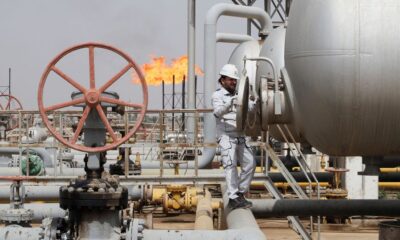Despite ongoing tensions in the Middle East, oil prices remained resilient, holding steady above key levels on Tuesday.
Brent crude oil traded above $87 a barrel after a slight dip of 0.3% on the previous trading day, while West Texas Intermediate (WTI) hovered around $82 a barrel.
The stability in oil prices comes amidst a backdrop of positive sentiment across global markets, with signs of strength in various sectors countering concerns about geopolitical tensions in the Middle East.
One of the factors supporting oil prices is the weakening of the US dollar, which makes commodities priced in the currency more attractive to international investors.
Concurrently, equities experienced gains, contributing to the overall positive market sentiment.
However, geopolitical risks persist as Israel intensifies efforts to eliminate what it claims is the last stronghold of Hamas in Gaza and secure the release of remaining hostages.
These actions are expected to keep tensions elevated in the region, adding uncertainty to oil markets.
Despite the geopolitical tensions, options markets have shown a more optimistic outlook in recent days regarding the potential for a spike in oil prices. This suggests that market participants are cautiously optimistic about the resolution of conflicts in the region.
Despite the lingering risks, oil prices have remained below the $90 per barrel price level, a level that many analysts consider significant, particularly as the summer months approach, typically known as the peak demand season for oil.
While prices have experienced some volatility, they have yet to reach the $90 threshold, prompting expectations of further increases later in the year.
Jeff Currie, chief strategy officer of energy pathways at Carlyle Group, expressed confidence in the potential for oil prices to surpass $100 per barrel, citing tight market conditions indicated by timespreads.
However, he also noted the importance of monitoring OPEC’s response to rising prices, as the organization may adjust production levels to stabilize the market.
Overall, while geopolitical tensions in the Middle East continue to pose risks to oil markets, the resilience of oil prices amidst these challenges underscores the complex interplay of global factors influencing commodity markets.

 Forex3 weeks ago
Forex3 weeks ago


 Naira2 weeks ago
Naira2 weeks ago
 Billionaire Watch2 weeks ago
Billionaire Watch2 weeks ago




 Naira2 weeks ago
Naira2 weeks ago




 Naira4 weeks ago
Naira4 weeks ago




 Naira2 weeks ago
Naira2 weeks ago


 Naira1 week ago
Naira1 week ago
 Banking Sector4 weeks ago
Banking Sector4 weeks ago



















